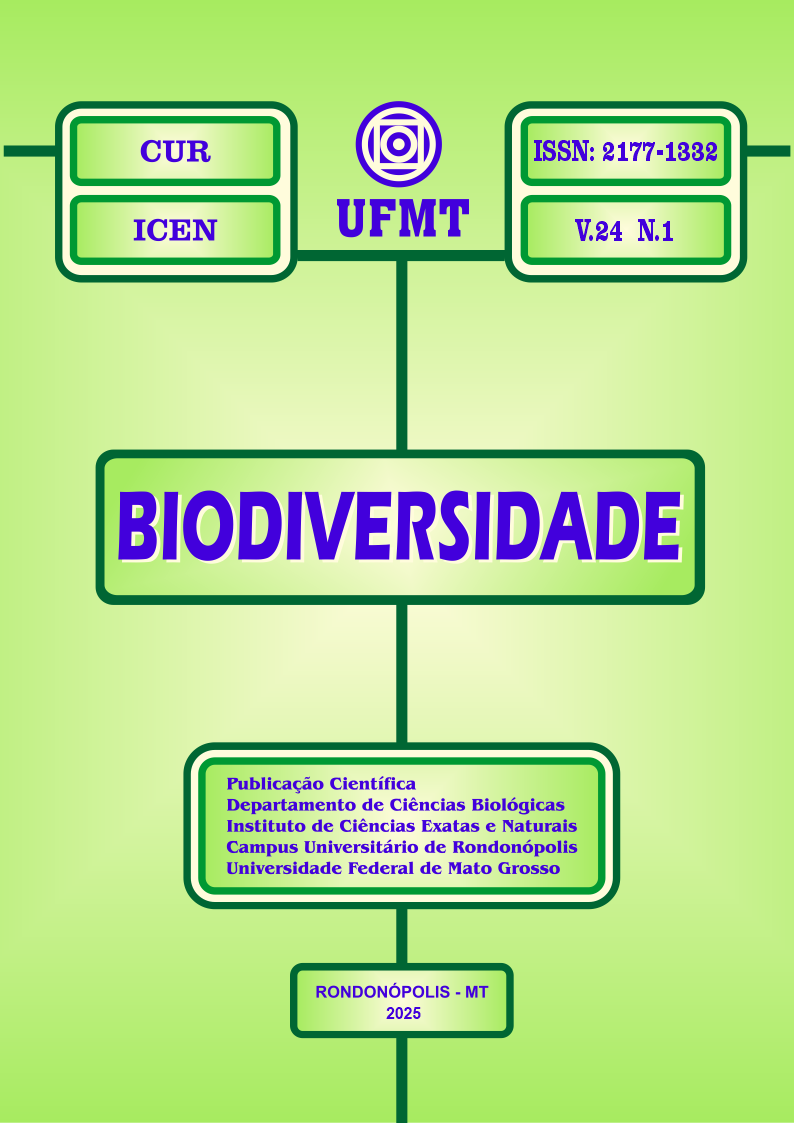SMALL FISH, BIG INDICATORS: STUDY ON GROWTH AND CONDITION FACTOR IN SPECIES FROM THE RIO VERMELHO, MT
Resumo
The length-weight relationship (LWR) provides biological information that allows estimating the weight of an individual based on its length or vice-versa, in addition to indicating its condition factor. This study aimed to estimate the length-weight relationship and condition factor of four small-sized fish species in a section of the Rio Vermelho, MT, Brazil. Sampling was conducted using a 5 mm mesh trawl net at four distinct sampling sites along the river from July 2010 to July 2011. The collected specimens were fixed in 10% formalin in the field and later preserved in 70% alcohol in the laboratory. For each specimen, the standard length (L) in cm and total weight (W) in g were measured to calculate the condition factor (K). To assess significant statistical differences in the condition factor among sampling sites for each species, Student's t-test was used. The type of growth was determined using the equation W = aLb, size classes were defined using Sturges' algorithm, and theoretical L50 values were estimated directly from standard length values. A total of 2,059 specimens were collected, including 96 Odontostilbe pequira, 953 Odontostilbe paraguayensis, 856 Aphyocharax dentatus, and 154 Engraulisoma taeniatum. The K values were significantly different (p < 0.05) among most sampling sites for each species. The species O. pequira, A. dentatus, and E. taeniatum exhibited negative allometric growth (b < 3), while O. paraguayensis showed positive allometric growth (b > 3). Based on the results, it was concluded that differences in condition factors may be associated with the environmental characteristics of each sampling site and that the studied species did not exhibit a clear distribution pattern regarding size classes. Further studies on feeding, sex determination, and L50 are necessary for a better understanding of the biology of these species




